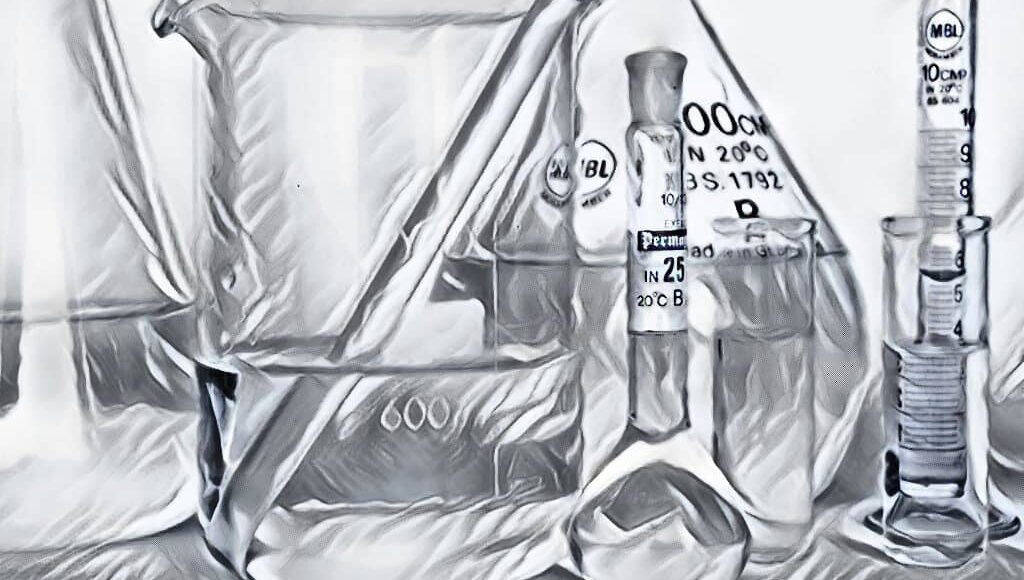Check out the Preparation Of Phosphate Buffer Solution (pH 5.8 To 7.4) In Laboratory
Hey, Good to see you here 😀 …… In this Article, We’re gonna discuss in Detail the Preparation Of Phosphate Buffer Solution (pH 5.8 To 7.4) In Laboratory….. If you have any queries, don’t forget to mention in Comments….. Thanks
A Buffer solution is a special type of solution which helps to maintain a stable pH level when a small amount of acid or alkali is introduced into a solution. A phosphate buffer solution is one of the commonly used buffer solution in biological laboratories and commonly used in Hematology laboratory for diluting the stains.
Chemically, the phosphoric acid has multiple dissociation constants; so we can prepare phosphate buffer solution near any of the three pH, which are at 2.15 (Strongly acidic), 6.86 (Slightly acidic) and 12.32 (strongly Basic). The phosphate buffer solution is most commonly prepared at pH 7.2 for hematology staining as diluents for Giemsa or Leishman stain, using the Monosodium and Disodium Phosphate.
Here is the list of Materials Required For The Preparation Of Phosphate Buffer Solution In Laboratory
- Monosodium phosphate – 20.209 g
- Disodium phosphate – 3.394 g
- Distilled Water – 1000 ml
- Phosphoric acid (to make the pH more acidic as per the case)
- Sodium hydroxide (to make the pH more alkaline as per the case)
- pH meter
- Measuring cylinder
- Beaker
- Hotplate with stirring bar
Here is the Procedure for the Preparation of Phosphate buffer solution in Laboratory
[wp-svg-icons icon=”point-right” wrap=”i”] Measure the 800 ml of distilled water with the help of measuring cylinder & Pour it into a beaker.
[wp-svg-icons icon=”point-right” wrap=”i”] To this, add 20.209 grams of Sodium phosphate dibasic and mix well with the help of stirrer.
[wp-svg-icons icon=”point-right” wrap=”i”] Now add 3.394 grams of Sodium phosphate monobasic and mix well using the glass stirrer.
[wp-svg-icons icon=”point-right” wrap=”i”] Check the pH of the solution using a pH meter and adjust the pH as necessary using phosphoric acid solution or sodium hydroxide solution as per the case and pH required (5.8 – 7.4).
[wp-svg-icons icon=”point-right” wrap=”i”] Once you reached the desired pH, add the remaining quantity of distilled water and make the total volume of Phosphate buffer solution to 1000 ml.
This Procedure will give you the 1000 ml of Phosphate buffer solution of 0.1 Molarity which can be adjusted to desired pH (5.8-7.4) as required for the protocol.
Alternatively,
Nowadays, commercially available Phosphate buffer tablets are available which are dissolved in a measured amount of water to prepare the buffer solutions. These tablets are standardized & there is no need to adjust the pH to prepare the specific volume of the solution.
The protocol to prepare Phosphate buffer solution using Buffer tablets (pH 7.2 for Giemsa stain) is as follows:
Here is the list of Materials Required For The Preparation Of Phosphate Buffer Solution using buffer tablets
- Phosphate buffer tablets for 1000 ml of water (ph 7.2)
- Distilled or deionized water – 1000 ml
- Graduated cylinder (1000 ml capacity)
- Conical flask or beaker (1000 ml capacity)
- Screw-capped glass bottle (1000 ml capacity)
- Small tongs or tweezers
Here is the Procedure For The Preparation Of Phosphate Buffer Solution using buffer tablets
[wp-svg-icons icon=”point-right” wrap=”i”] Measure 1000 ml of distilled or de-ionized water using a graduated cylinder and pour it into a flask or beaker.
[wp-svg-icons icon=”point-right” wrap=”i”] Using small tweezers, take out a tablet from the container and place one phosphate buffer tablet into the flask or beaker containing Distilled water. Be careful not to touch the tablet with your hand.
[wp-svg-icons icon=”point-right” wrap=”i”] Mix the content by gently swirling the flask or stirring with a glass stirrer (in case of the beaker) until the tablet is completely dissolved in the water.
[wp-svg-icons icon=”point-right” wrap=”i”] Label the bottle of buffered water and document the procedure in the quality control log-book of your laboratory.
[wp-svg-icons icon=”point-right” wrap=”i”] Use this phosphate buffer solution (pH 7.2) to prepare the working solution of Giemsa stain by diluting the Giemsa stock solution with this Buffer solution in the desired ratio.
What are the Advantages and Disadvantages of Phosphate Buffer solution
[wp-svg-icons icon=”point-right” wrap=”i”] The two key advantages of phosphate buffers are that
→ Monosodium & Disodium Phosphate is highly soluble in water.
→ The Phosphate buffer has an extremely high buffering capacity and gives better results in Hematology staining.
[wp-svg-icons icon=”point-right” wrap=”i”] The Disadvantage of Phosphate buffer is that Phosphate inhibits the enzymatic reactions and also Phosphate precipitates in the Ethyl alcohol (ethanol) so it cannot be used in the preparations to precipitate DNA or RNA.
Frequently Asked Questions (FAQs)
At a pH of 7.4, phosphate exists in its conjugate base form, called hydrogen phosphate (HPO42-).
To prepare a phosphate buffer, mix a solution of monobasic potassium phosphate (KH2PO4) and a solution of dibasic potassium phosphate (K2HPO4) in the appropriate ratio to obtain the desired pH.
To prepare a phosphate buffer at pH 5.8, mix 0.1 M solutions of monobasic potassium phosphate and dibasic potassium phosphate in a ratio of 1:4.1.
The pH of a phosphate buffer solution depends on the ratio of the two phosphate forms used, as well as their concentration.
Buffer solutions are used in the laboratory to maintain a stable pH for chemical reactions, as pH changes can affect the reaction rate, yield, and product formation. Buffers can also be used to control the pH of biological samples, such as cell cultures and blood.
The formula for a phosphate buffer solution depends on the ratio of the two phosphate forms used. For example, a commonly used phosphate buffer has a ratio of 1:4.1 for monobasic potassium phosphate (KH2PO4) and dibasic potassium phosphate (K2HPO4), respectively. Its formula can be written as (KH2PO4)0.1 M / (K2HPO4)0.41 M, pH X.







